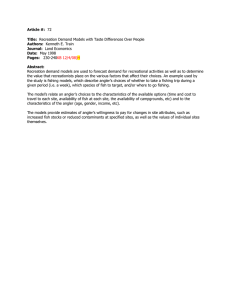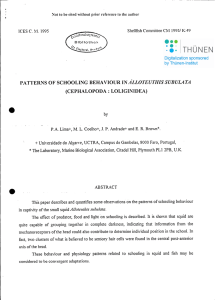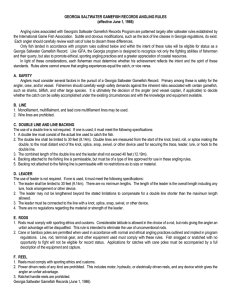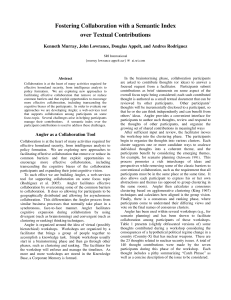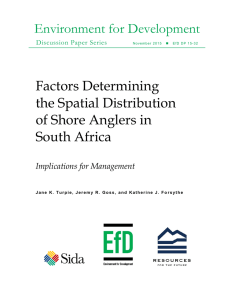Ocean Animals
advertisement
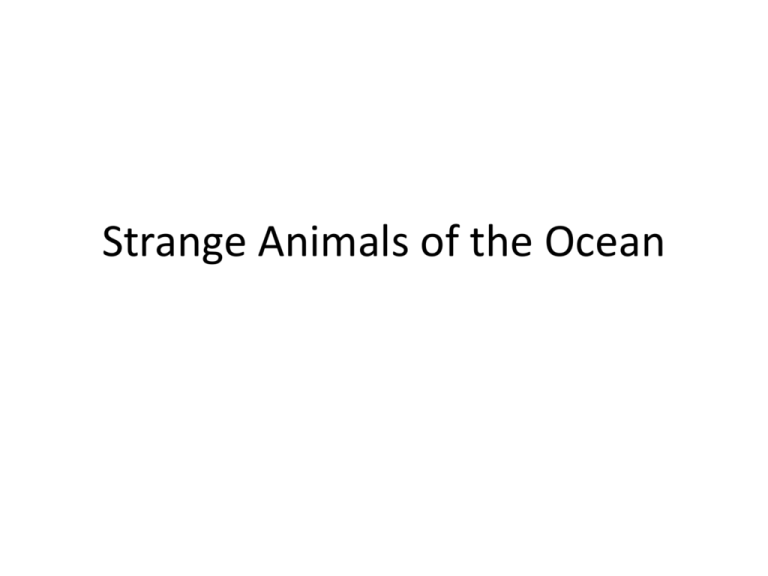
Strange Animals of the Ocean Pink Sea-Through Fantasia • The pink see-through fantasia is a sea cucumber, found about a mile and a half deep in the Celebes Sea in the western Pacific (east of Borneo). The Squidworm • Found in the Celebes Sea, this worm is, well ... this worm seems confused. Scientists call it a squidworm. (No, not Squidward.) Sea Angel • We wouldn't be surprised to find that sea angels are in the same family as, say, the mythological Sirens. They're called angels, but are actually a predatory sea snail. This particular specimen, Platybrachium antarcticum, "flies through the deep Antarctic waters hunting the shelled pteropods (another type of snail) on which it feeds," according to the Marine Census of Life. Marrus Orthocanna • Like a multi-stage rocket, this bizarre microscopic creature, Marrus orthocanna is made up of multiple repeated units, including tentacles and multiple stomachs. Never heard of a physonect siphonophore? That's what this is. It's something like a jellyfish, and is more closely related to the Portugese man o'war. One interesting thing about it: Like ants, a colony made up of many individuals has attributes resembling a single organism. Flamingo Tongue Snail • With a name like Flamingo tongue snail, and the flamboyant coloration to match, you might think that this Cyphoma gibbosum has a shell worthy of collecting. Not so. All its color comes from the soft parts of its body, which envelope its shell unless it's threatened. This specimen was photographed feeding on soft corrals near Grand Cayman in the British West Indies. Vampire Squid Leafy Seadragon • Found along the southwestern coast of Australia, the leafy seadragon, Phycodurus eques, uses its fins not only to propel it through the water, but as camouflage to resemble a piece of drifting seaweed Kiwa, God of Shellfish, Crab • This furry-clawed crab appeared so unusual when scientists discovered it 5,000feet deep on a hydrothermal vent south of Easter Island that they designated it not only a new genus, Kiwa, but a new family, Kiwidae – both named for the mythological Polynesian goddess of shellfish. It's likely blind and may use bacteria in its furry claws to de-toxify its food. Terrible Claw Lobster • Only four other individuals, in two species, had been found previously, both in Australia. The specimen was collected during the Aurora mission in 2007 The Dumbo Octopus • This Grimpoteuthis octo pus found over the MidAtlantic Ridge, is affectionately called Dumbo because of the way it flaps its ear-like fins to swim. Viperfish • The Viperfish (Mesopelagic - found at 80-1600 meters - about a mile down) is one of the most wicked looking sea monsters. Some of them are black as night all over with light organs (called photophores) in strategic places on their bodies, including one on a long dorsal fin that serves as a lure for the fish it preys upon. Some viperfish (and many other deep ocean fish species) don't have any pigment (color) at all - they're transparent. They also have enlarged eyes, presumably for gathering as much light as possible where there is little or no light at all. The light organs of this sea animal create lights by using a chemical process called bioluminescence. Dragonfish Coelacanth Angler • the angler uses this organ like a lure to attract its prey. It will flash its light on and off while waving it back and forth like a fishing pole. When the prey fish gets close enough, the angler snaps it up with its powerful jaws. A strange fact about the deep sea angler is the fact that the male is smaller and different in appearance from the female, which is pictures above. The male of the species is about the size of a finger and has small hook teeth, which it uses to attach itself to the female. Once attached, its blood vessels join with that of the female and it will spend the rest of its life joined to her like a parasite, getting all of its nourishment from her body. Gulper Eel Giant Isopod • Giant isopods are known to reach a size of over 16 inches in length Long-nosed Chimaera • Biologists have gone to great lengths to describe the long-nosed chimaera, Harriotta raleighana, whose kind can reach five feet in length. In South Africa, it is known as the "ghost shark," though it is only distantly related to sharks. A touch of the venomous spine on the first dorsal fin can kill a person, though such a fate is unlikely given the 8,000foot depths at which this creature lives. Colossal Squid Ocean Sunfish Oarfish Megamouth Shark Fangtooths, also known as ogrefishes Sea Robbins Handfish Goblin Shark HatchetFish Piglet Squid • This cute little guy swims upside-down, making its tentacles appear to be growing out its head, and making its head look like a chubby, limbless body. Barreleye Fish • You know how most fish can’t move their eyes very far? The Barreleye Fish can move it’s eyes around inside its head in any direction it wants. Since the fish’s head is transparent, it can look straight through it’s own head. The Psychedelic Frogfish BLOBFISH!
